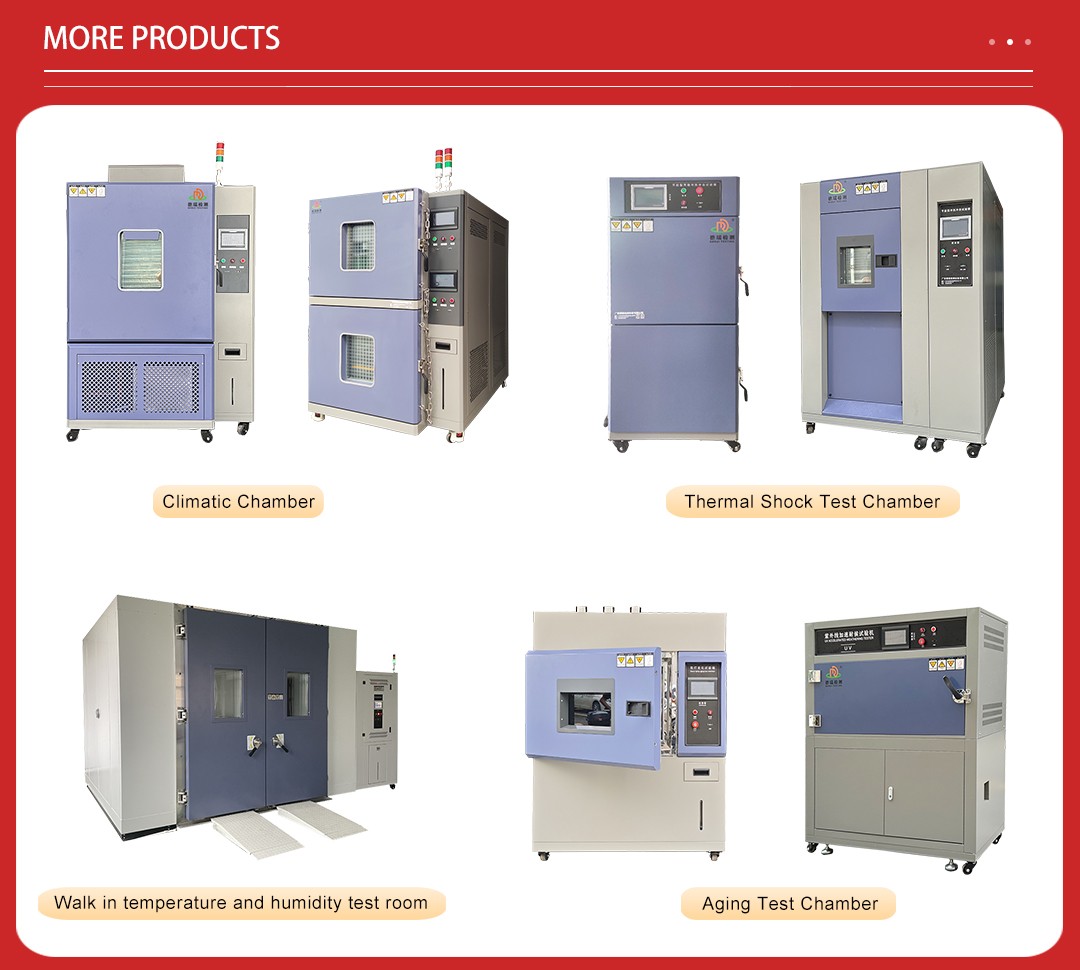
The UV aging chamber is a critical instrument for evaluating the environmental durability of rubber products. Widely used in industries such as automotive, aerospace, construction, and industria ...

The UV aging chamber is a critical instrument for evaluating the environmental durability of rubber products. Widely used in industries such as automotive, aerospace, construction, and industrial manufacturing, this equipment simulates the long-term effects of sunlight exposure, enabling manufacturers to assess how rubber components will perform over time under real-world conditions. It is particularly important for testing seals, gaskets, tires, and other rubber parts that are exposed to outdoor elements.

1. High-Fidelity UV Simulation: Equipped with high-performance UV lamps that closely mimic the spectral distribution of natural sunlight, ensuring accurate and repeatable test results.
2. Customizable Test Conditions: Offers programmable cycles for temperature, humidity, and UV intensity, tailored to simulate various environmental conditions.
3. Advanced Monitoring Systems: Includes precision sensors and data logging capabilities for continuous monitoring and detailed analysis of test parameters.
4. Safety and Reliability: Built-in safety features and robust construction provide a dependable environment for conducting rigorous tests, even under extreme conditions.
5. User-Friendly Interface: An intuitive control system allows for easy setup, operation, and maintenance, with real-time data display and remote access options.

1. The surface of the specimen from the lights from the nearest parallel to the surface: about 50mm
2. Wavelength range: UV-A wavelength range of 315 ~ 400nm
3. Within the radiation intensity 1W/m2/340nm
4. Temperature Resolution: 0.1 ℃
5. Light Temperature range: 50 ℃~ 70 ℃/ temperature tolerance of ± 3 ℃
6. Condensing temperature range: 40 ℃~ 60 ℃/ temperature tolerance of ± 3 ℃
7. Blackboard thermometer measuring range: 30 ~ 80 ℃/ tolerance of ± 1 ℃
8. Temperature control: PID self-tuning temperature control mode
9. Humidity range: about 45% ~ 70% R.H
10. Sink requirements: water depth less than 50mm, and a water supply automatic controller
11. Standard Specimen size: 75 × 150mm 48pcs
12. Recommended instrument environment: 5 ~ 35 ℃, 40% ~ 85% R • H, 300mm from the wall
13. Voltage: 220V ± 5%, single-phase three-wire, 50Hz, 10A, 15A GFCI requirements

Principles of UV Aging Testing for Rubber
The UV aging process for rubber involves exposing samples to controlled levels of ultraviolet light, which accelerates the natural photochemical reactions that occur when rubber is exposed to sunlight. UV radiation can cause degradation of the polymer chains, leading to changes in physical properties such as tensile strength, elongation, and hardness. The chamber can also introduce heat and moisture to replicate the combined effects of temperature and humidity, providing a comprehensive simulation of outdoor weathering.
Role and Benefits
1. Predictive Performance: By accelerating the aging process, manufacturers can predict the long-term performance of rubber products, identifying potential issues before they reach the market.
2. Quality Assurance: Ensures that rubber components meet or exceed industry standards for durability and reliability, enhancing product quality and customer satisfaction.
3. Cost Efficiency: Reduces the time and resources required for field testing, allowing for faster product development cycles.
4. Material Optimization: Helps in selecting the most suitable materials and additives for specific applications, improving the overall design and functionality of rubber products.
Specimen Requirements and Operating Precautions
1. Sample Preparation: Specimens should be prepared according to relevant international standards such as ISO 4892, ASTM G154, or DIN 53388. Ensure samples are representative of the material and application, with consistent thickness and surface finish.
2. Mounting and Placement: Securely mount the specimens within the chamber, ensuring uniform exposure to UV light. Avoid overlapping or shading, which can affect test accuracy.
3. Environmental Parameters: Set the appropriate temperature, humidity, and UV intensity based on the intended use environment. Verify that these parameters remain within specified limits throughout the test.
4. Test Duration: Determine the exposure duration based on the expected service life of the rubber product. Longer durations may be necessary for more durable materials.
5. Post-Test Evaluation: After the test, carefully remove the specimens and evaluate changes in physical properties, such as tensile strength, elongation, and color fading. Document all observations and compare results against baseline data.
The UV aging chamber is an indispensable tool for ensuring the environmental durability of rubber products. By accurately simulating the effects of UV radiation, heat, and moisture, manufacturers can gain valuable insights into material behavior, optimize product design, and enhance quality assurance processes. When selecting a UV aging chamber, consider factors such as sample size, environmental conditions, data logging capabilities, and cost-effectiveness to meet your specific testing needs.


Not search wanted products